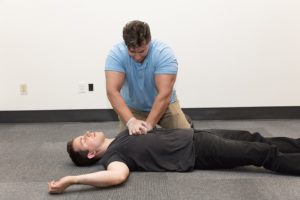Near drowning is a term describing death from suffocation while under water. Take note that it is the last phase before fatal drowning which leads to death. Victims still require medical care to prevent associated complications.
In most cases, young children are the main victims, but drowning can occur to anyone of any age.
What are the causes?
Near drowning occurs if an individual could not breath under water for an extended span of time. Once near drowning occurs, the body is deprived of oxygen to a point where the major bodily systems start to shut down from the lack of oxygen.

In some instances, this can occur in just seconds. The process generally takes longer among adults.
Take note that it is possible to revive an individual who has been submerged in water for a long period. Most cases of near drowning are linked to accidents that occur near or in the water.
The usual causes include the following:
- Panic while in the water
- Inability to swim
- Unattended children near bodies of water
- Suicide attempt
- Unattended infants in bath tubs even for short periods of time
- Falling into thin ice
- Seizure, concussions or heart attack while in the water
- Alcohol consumption on a boat or while swimming
What are the signs?
An individual who nearly drowned might be unresponsive. Other signs that might be present include:
- Chest pain
- Coughing
- Cold or bluish skin
- Abdominal swelling
- Vomiting
- Shortness of breath
Management of near drowning
Near drowning often occurs if there is no lifeguard or medical professional available. One can attempt to rescue the individual from the water but only if it is safe.
Some of the tips in assisting an individual who is drowning include:
- Utilize safety objects such as throw ropes and life rings to assist the victim if still conscious.
- Only enter the water to save an unconscious individual if skilled enough to safely do so.
- Initiate rescue breathing right away if the individual ceases to breathe.
- Be careful when handling the individual and executing CPR due to the possibility of a neck or spinal injury.
- The victim must be moved out of the cold water, remove the wet clothes and wrap with a warm blanket to prevent hypothermia.
More Information / Disclaimer
The information posted on this page on near drowning is for learning purposes only. Learn to recognize the signs by taking a standard first aid course with Saskatoon First Aid.
